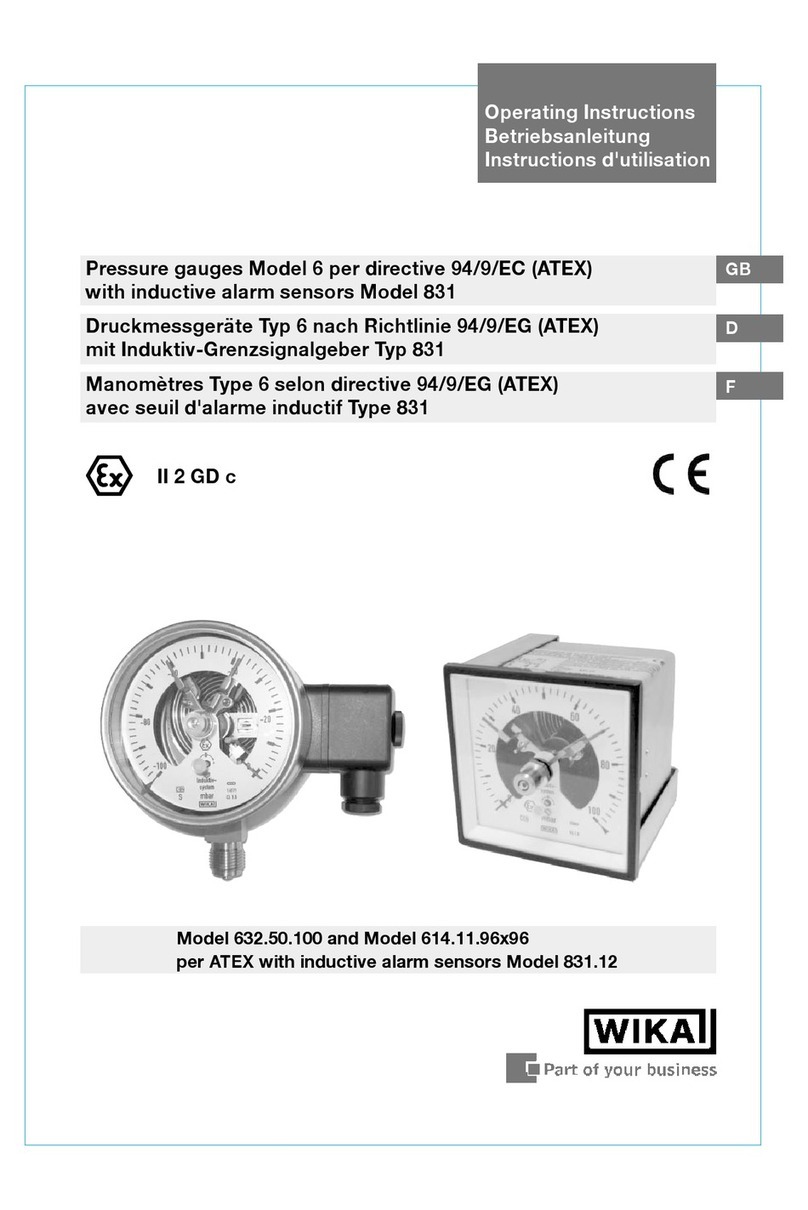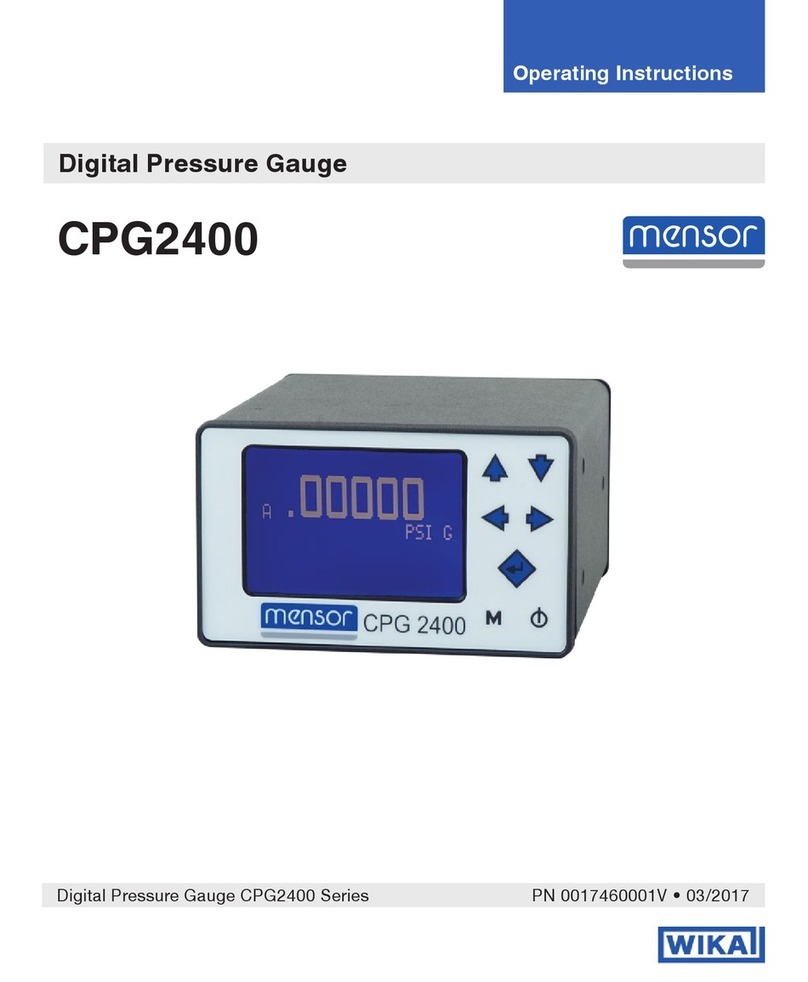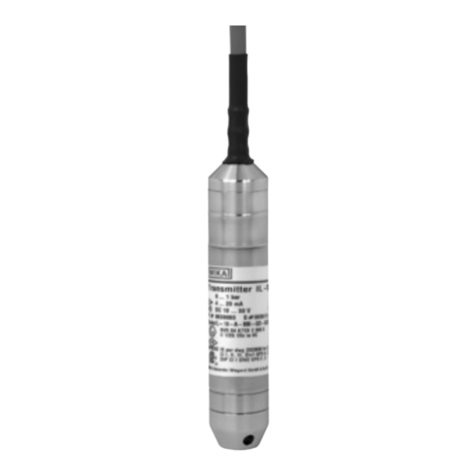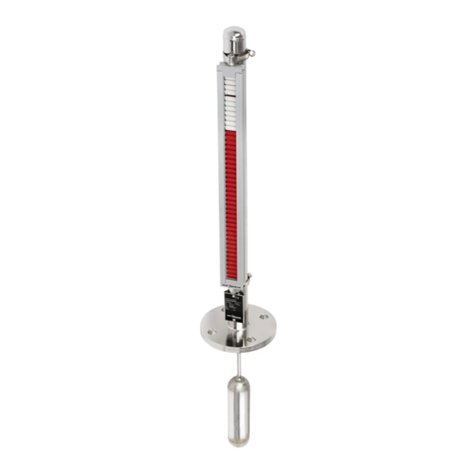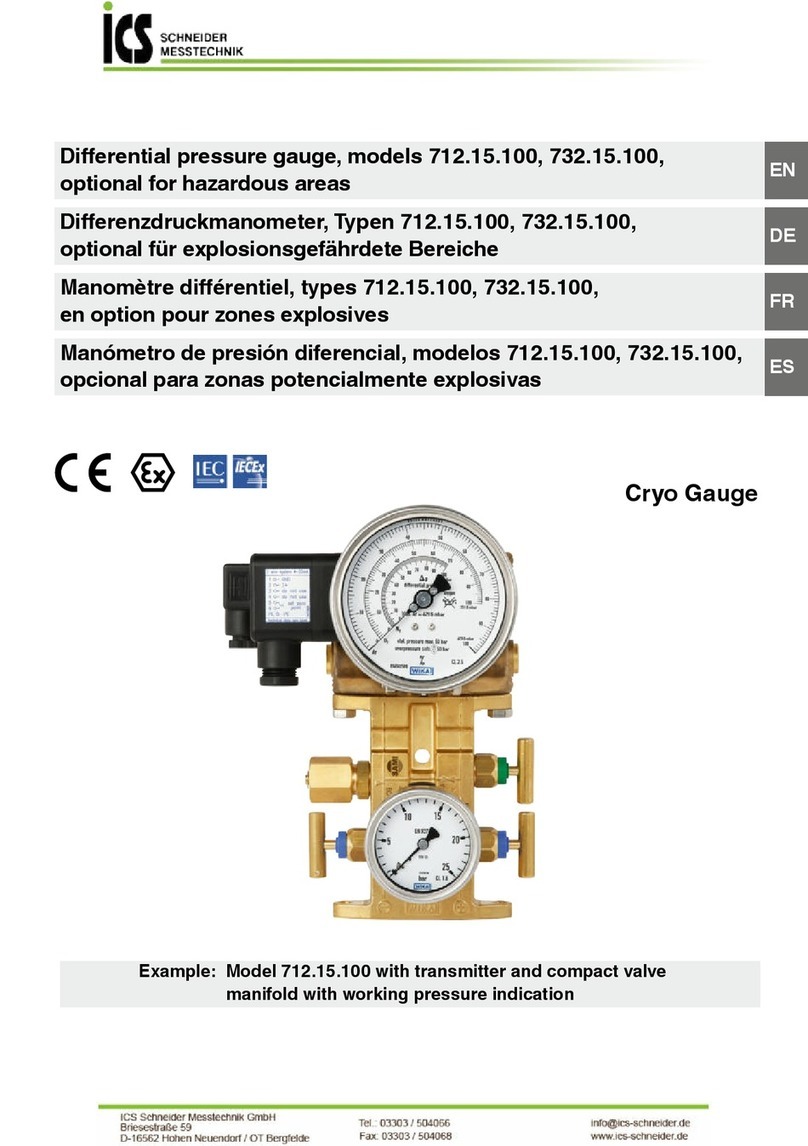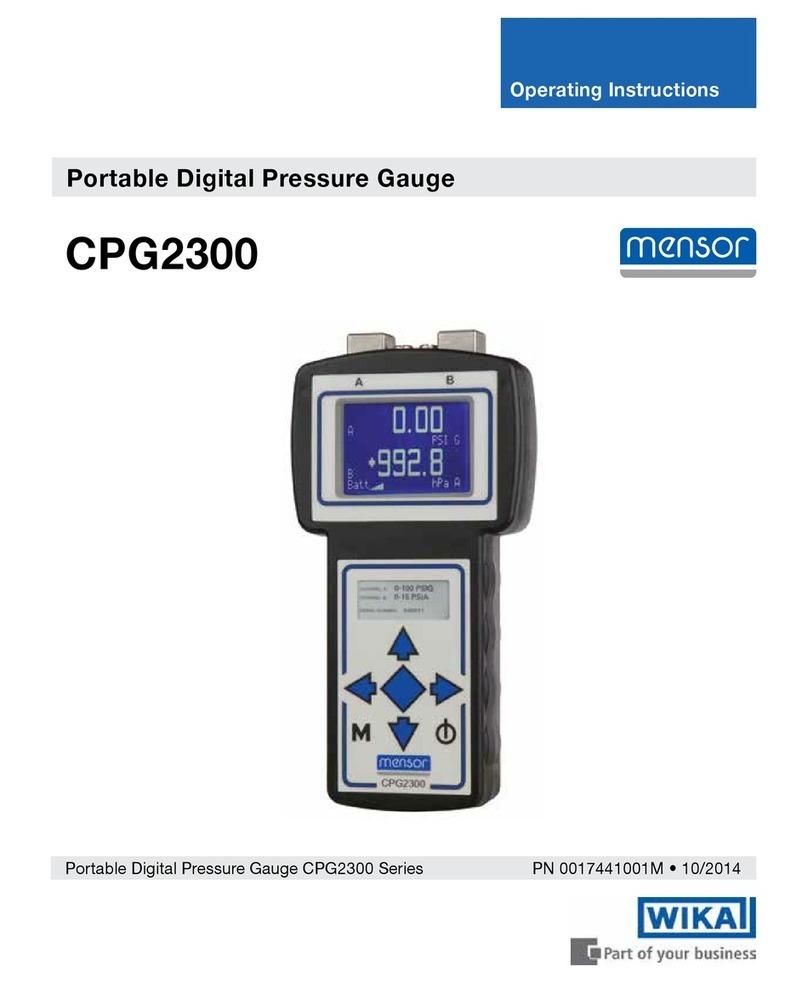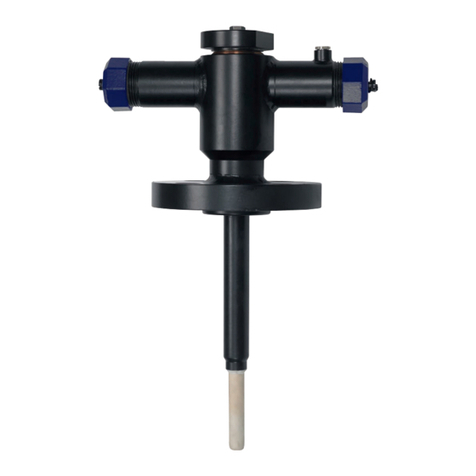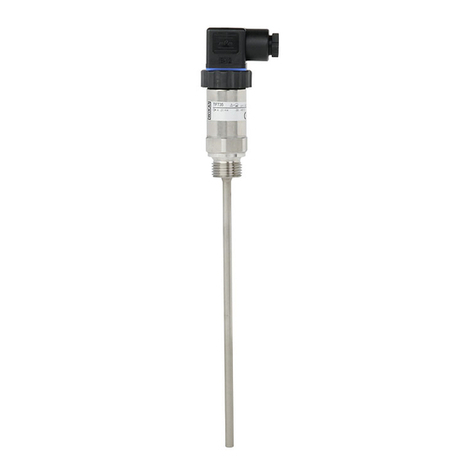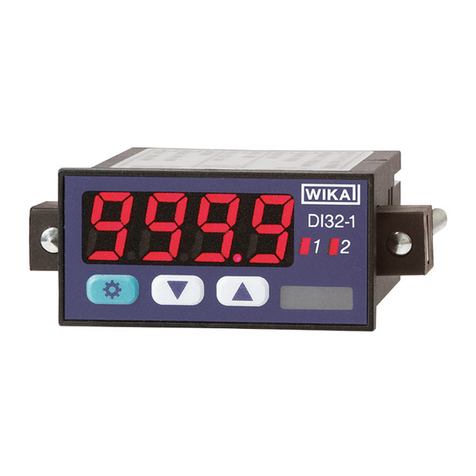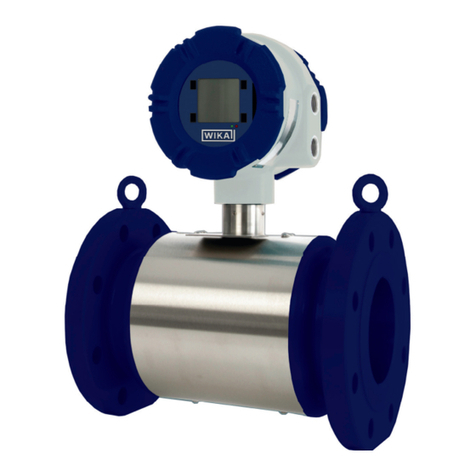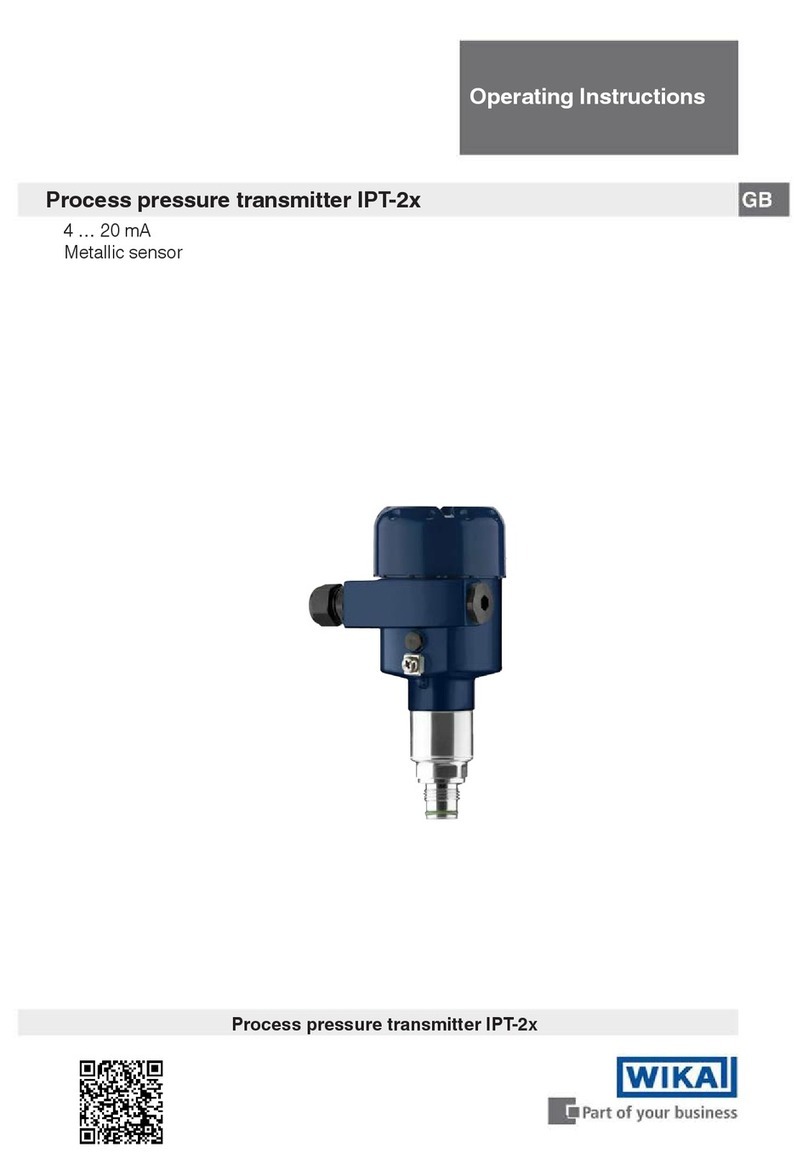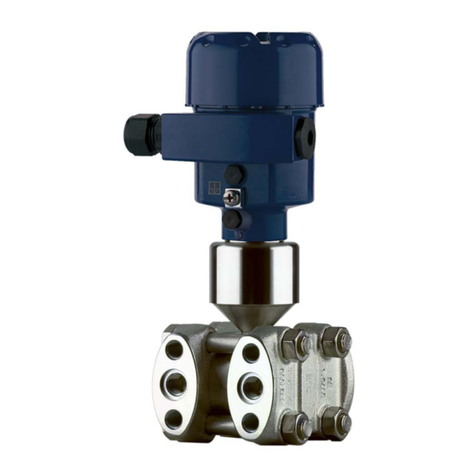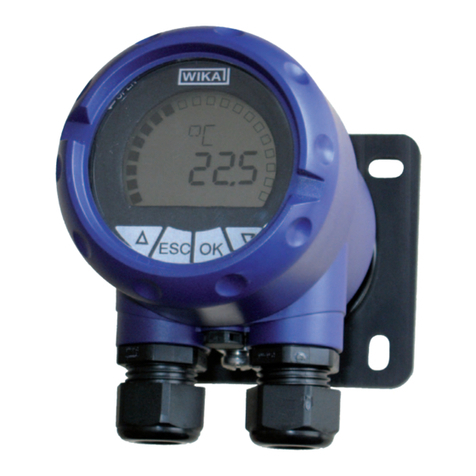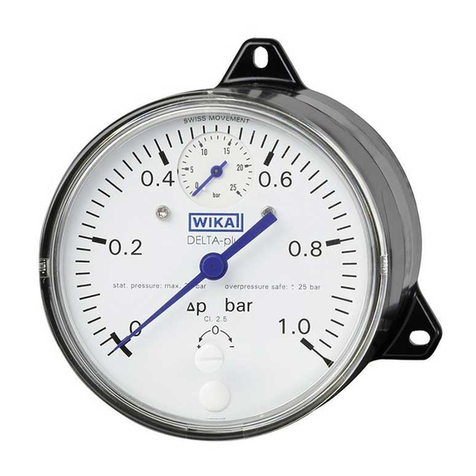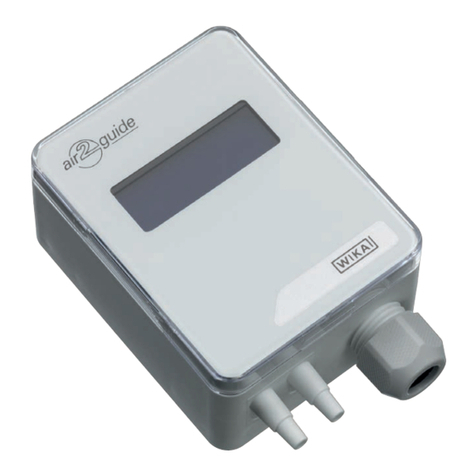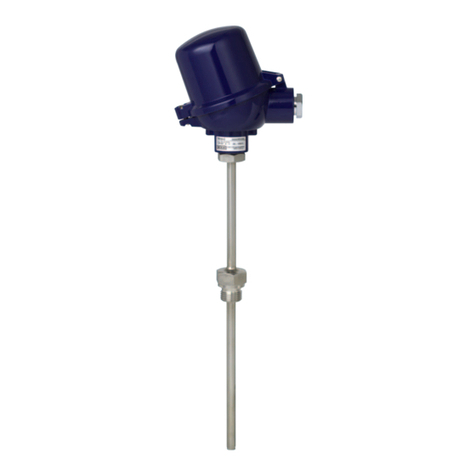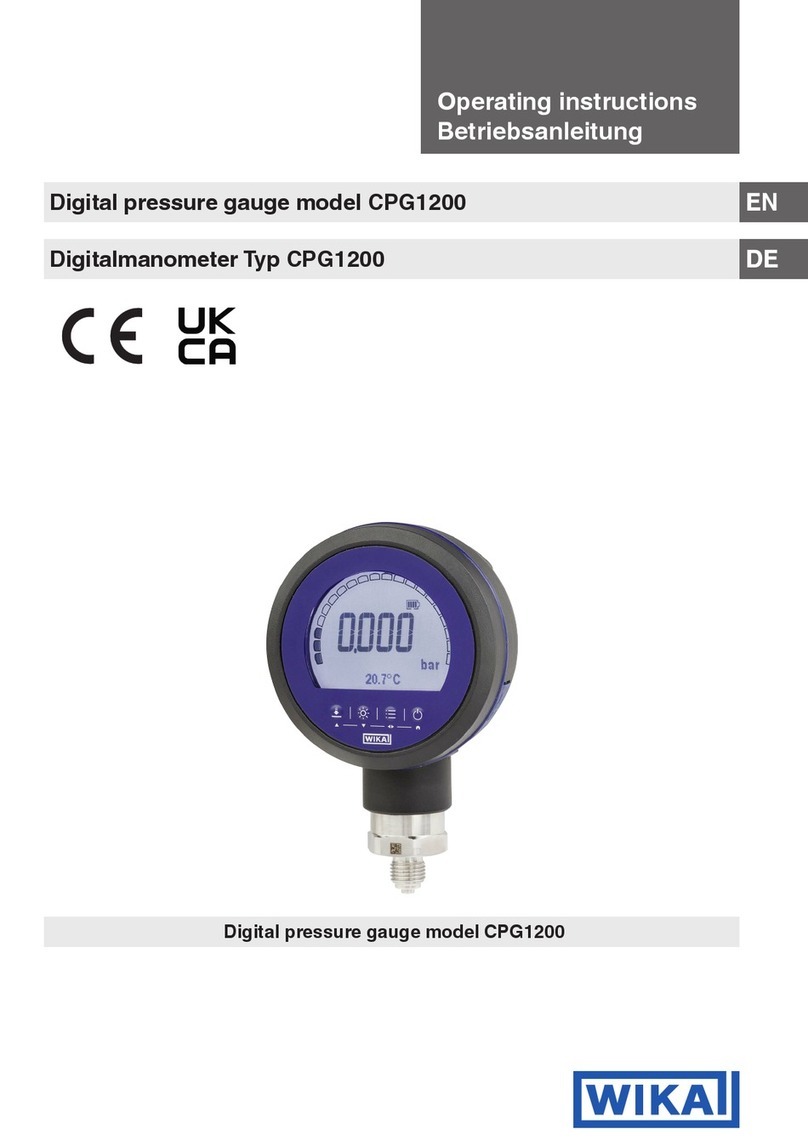WIKA Operating instructions DELTA-plus, DELTA-comb and DELTA-switch 9
2308215 07/2009 GB/D/F
GB
7. Options and accessories
7.2 Four-way valve manifold
Shut off j- and iprocess line for disassembling and testing of
measuring instrument without interrupting the process that is running.
Protect the instrument against inadmissible
overpressure loading, such as, for example, in
the case of pressure tests and undefined
operating conditions (also temporary shut down).
Pressure equalising for zero point check during
normal operation as well as equalisation of the
pressures at high pressure and low pressure
side during start-up and operation (with opened
pressure equalising valve).
Process line air bleeding for liquid measuring
media and purging the process line for removing
impurities.
7.2.1 Handling instructions
Work sequence to start measuring
1. Open pressure equalising valve (middle valve)
2. Open shut-off valve of the negative-pressure media chamber (iright
valve) and the positive-pressure media chamber (jleft valve)
3. Close pressure equalising valve
Operating sequence for air bleeding/purging of piping
1. start: Open shut-off valve of the negative-pressure (i) and positive-
pressure (j) media chamber
Open pressure equalising valve and valve for purging or air bleeding
2. end: Close pressure equalising valve and valve for purging or air bleeding
Procedure at the end of the measuring operation
(also for partial system shut-down)
1. Open pressure equalising valve
2. Close shut-off valve of the negative-pressure (i) and positive-pressure
(j) media chamber
Task list for removing the transmitter during normal operation
1. Open pressure equalising valve
2. Close shut-off valve of the negative-pressure (i) and positive-pressure
(j) media chamber
3. Open valve for purging or air bleeding
Gauge valve,
low pressure
side i
Pressure
equalising valve
Gauge valve,
high pressure
side j
Valve for
purging or
air bleeding












